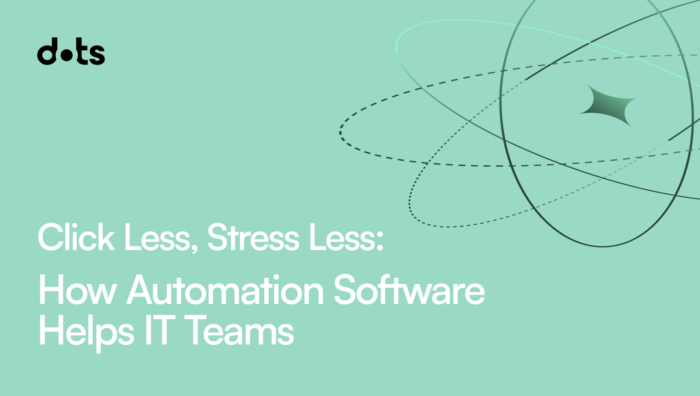Work-life balance has become blurred over the past years. Despite the shift to remote work, employees are putting in more effort than ever, possibly because pajamas don’t quite scream “day off” anymore. But is this the only cause? Is it the lingering effect of the pandemic, or does it reflect an ingrained structural pattern?
The data on average working hours in 2023 indicates that workers worldwide are working additional hours, and early reports indicate the same in 2024. Some may see these marathon work hours as badges of dedication, but others raise alarms about fatigue and burnout. Is there a potential for automation to calm the waters? And how does remote onboarding fit into this equation?
The Reality Behind the Numbers: Are We Really Working More Since COVID-19?
The examples mentioned above suggest a growing gap between work and life activities. But let’s look at what caused it first.
According to the International Labour Organization posted after the pandemic, companies with a remote-first approach tend to demand more employee availability. For example, many team members are expected (or feel expected) to check emails or join calls outside typical working hours.
When flexible schedules are implemented, many employees are required to go “above and beyond” and sacrifice their health and leisure time as a result of this pressure. With no physical office to escape from, it’s tough to tell your job to take a hike. The commute from your desk to your couch doesn’t exactly let you say, “Work’s over, folks!”
Microsoft’s research conducted in 2023 found that while employees valued flexible working hours, they also recognized that it comes at the cost of having to work more and having reduced personal time. But why?
The Shift to Remote Onboarding: A Blessing or a Curse?
The rise of remote onboarding is mainly driven by international business expansion. New hires can adapt to their new roles more efficiently and enjoy more flexibility, which benefits both employees and employers. Plus, thanks to remote onboarding, these new hires can be literally anywhere.
Yet there are shortcomings. Remote workers, for instance, are intimidated to prove their significance right away and overwork themselves. They tend to work “after hours” in an attempt to impress the employer or get things done—or just for fear of being accused of underworking. This causes overworking to become the new normal, thus becoming a productivity killer in the future.
You might not be able to see how IT logistics is going to fly in with its superhero cape, so let’s take a look:
- Stress buster extraordinaire: Say goodbye to juggling flaming torches! For IT teams, automated IT logistics takes the stress down a notch by automating menial tasks. It’s like having your own robot assistant to handle device prep, access control, and training.
- Time savings all around: New hires can be onboarded with a few clicks, and IT staff don’t have to become tech support detectives, hunting down each and every misplaced cable or forgotten password. The new employee is set up from day one, ready for a clean start.
- Expectation setter: No crystal ball required! Clearly define work expectations upfront. Pair these with top-notch IT systems to prevent remote workers from turning into exhausted zombies.
- MDM and Endpoint Management: Offering secure access to company resources, smooth functioning of devices, and remote assistance, MDM tools can integrate with your IT logistics to offer additional support to your employees.
How Does IT Logistics Contribute to Work Hours Reduction?
As companies strive to perform better and eliminate overwork, IT logistics has become a basic requirement. IT asset management (ITAM) systems provide employees with suitable tools while helping automate repetitive work. This automatically saves the hours that were previously used to complete these low-priority tasks, thereby letting employees concentrate on the more important parts of their jobs.
IT logistics plays a large role within industries that are dependent on remote structures. Automated features such as advanced stock analytics, streamlined communication procedures, and timely procurement of IT tools have reduced downtime, so employees feel less obligated to make up time they should never have lost in the first place.
Bonus points: IT logistics also aids in achieving the goals for improving environmental performance through effective resource management and minimization of waste. By reconciling logistics, employee performance, and ergonomics, organizations gain a benefit in return—effectiveness in operations without losing organizational balance.
Will Automation Help Reduce Our Working Hours?
Automation brings about an extraordinary opportunity to say goodbye to present work-hour norms without requiring more time from employees. For instance, employees can efficiently work on easier or less important tasks by using automation tools and artificial intelligence. Automated email replies and automated calendar appointments reduce time dedicated to administrative activities.
However, automation must be done in a strategic manner. Ineptly designed systems create layers of extra work that undo the intended benefits. An organization should ensure that its automation system can supplement human efforts and empower workers rather than cause problems.
Despite these challenges, experts are still optimistic. According to a 2024 Deloitte report, businesses that prioritize strategic automation will see marked improvements in employee satisfaction and overall efficiency. This aims to reduce workloads and create smarter, more sustainable workflows.
The Future of Work: What Lies Ahead in 2025?
Welcome to 2025! As we zoom into the future, let’s lay out some essential checkpoints to ensure work-life balance and productivity don’t evolve into a sci-fi cautionary tale:
- Extended work hours alert: If the trend continues unchecked, longer work hours might become the norm. Organizations must step up to create (remote) spaces where employees can safely power down without fearing repercussions.
- Clear and concise onboarding: Remote onboarding strategies should focus on clear communication about expectations. Ensure everyone knows what’s expected from the get-go.
- Evolving IT logistics: Simplifying workflows is essential. Advancements in IT logistics should prioritize smooth operations and help alleviate employee stress, not add to it.
- Automation with Purpose: Automation holds great promise for workload reduction, but only with thoughtful implementation. The goal is to boost human contribution, not just replace it with robots.
A Smarter Approach to Work-Life Balance
Even with the challenges seen in 2024, it is possible to attain a healthier work-life balance. By integrating strong IT logistics and proper remote onboarding, companies can operate efficiently and respect employee boundaries.
Dots streamlines this by providing holistic IT procurement services and a powerful IT asset management platform, integrated with MDM and HRIS. From managing IT assets to automating processes, Dots provides the tools a business needs for worry-free IT operations, letting businesses focus on what really matters. Ready to transform your IT strategy? Book a free demo today!




